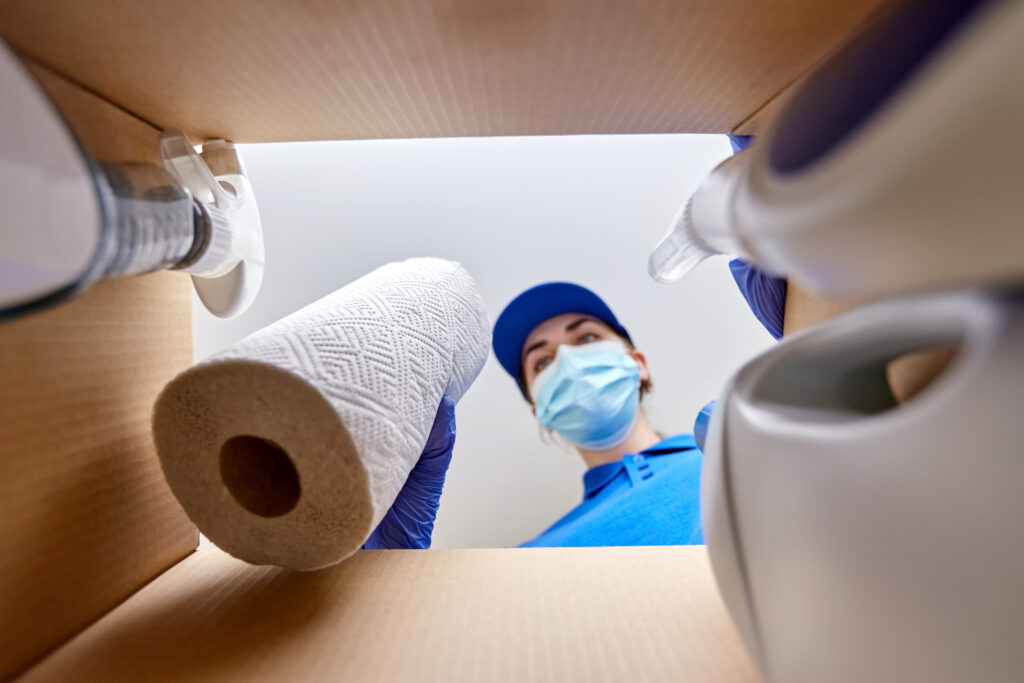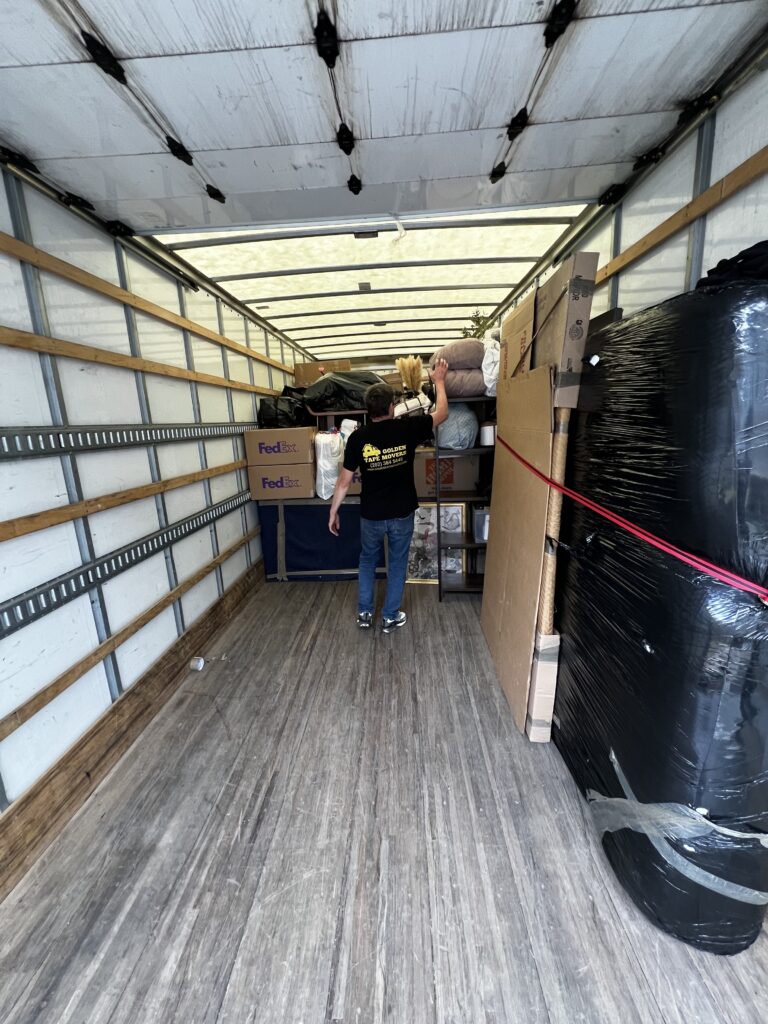Lab Relocation Services: 5 Essential Steps for a Safe and Compliant Move
Lab relocation services are among the most complex types of commercial moves. Whether you’re transferring a biomedical lab, research facility, or clinical diagnostics center, the process involves moving sensitive instruments, temperature-sensitive samples, hazardous chemicals, and proprietary materials—with zero margin for error.
Whether you’re moving a biomedical research facility, a clinical diagnostics lab, a forensic toxicology lab, or a university-affiliated research department, the success of your lab relocation depends on early planning, careful coordination, and specialized moving expertise.
At Golden Tape Movers, we specialize in lab relocation services across Maryland, Washington D.C., and Virginia. With years of experience working with research labs, biotech companies, hospitals, and federal institutions, we understand the challenges you face and offer a tailored solution to get your lab up and running with minimal downtime.
This comprehensive guide outlines the five essential steps for a seamless laboratory relocation. It also includes budgeting tips, compliance advice, and bonus best practices to ensure your move is smooth from start to finish.

A Golden Tape Movers team member packs disinfectants and paper products with precision and care.
Step 1: Start with a Detailed Lab Relocation Plan
Proper planning is the single most important factor in a successful lab move. The earlier you begin, the more flexibility you’ll have to mitigate risks, manage downtime, and coordinate vendor responsibilities.
Start with a relocation committee that includes team leads from lab operations, safety/compliance, facilities management, and IT. Assign specific roles and create a relocation Gantt chart or timeline with defined phases such as pre-move prep, equipment decommissioning, transportation, reinstallation, and validation.
During the planning phase, be sure to:
- Schedule site visits at both the origin and destination
- Document infrastructure needs (power, gas lines, data ports, HVAC)
- Verify construction timelines for the new location
- Align with internal research deadlines and grant cycles
- Notify vendors, utility providers, and service contractors
Use a cloud-based task management platform (like Trello, Asana, or Monday.com) to create checklists, assign tasks, and monitor progress. Include documentation for compliance and chain of custody, especially if handling regulated materials.
📝 Helpful Resource: OSHA Laboratory Safety Guidance
Step 2: Perform a Comprehensive Equipment and Materials Inventory
A detailed inventory is critical for managing logistics and ensuring nothing is lost or damaged during the move. Use an asset management system or spreadsheet to record the following for each item:
- Equipment name, manufacturer, model, and serial number
- Physical dimensions and weight
- Calibration and service history
- Special handling or installation instructions
- Responsible team member or department
Separate the inventory into the following categories:
- Fragile or large equipment – such as biosafety cabinets, centrifuges, spectrometers, incubators, and PCR machines. These may require custom crating or vibration-dampening equipment.
- Temperature-sensitive items – such as blood samples, reagents, or vaccines. These will require dry ice, refrigerated transport, and temperature logging.
- Hazardous or regulated materials – like flammable solvents, infectious waste, or radioactive isotopes. These require specific labeling and DOT-compliant packaging.
- Consumables and accessories – like pipette tips, gloves, and microtubes.
✅ Pro Tip: Assign barcode tags or RFID labels to maintain visibility and traceability across every phase of the move.
🔍 Need compliance support? Read the FDA’s guidelines on lab equipment validation.
Step 3: Choose a Golden Tape Movers for lab relocation services
Unlike regular commercial movers, lab movers must be trained in handling scientific equipment, understanding cleanroom protocols, and navigating hazardous material transport laws. Choosing the right laboratory relocation partner can mean the difference between a smooth transition and a costly delay.
What to look for in a lab moving company:
- Scientific and technical moving experience – Ask for case studies or references from labs in similar industries.
- Climate-controlled vehicles – To protect biological samples, medicines, or frozen materials.
- Compliance knowledge – Including OSHA, DOT, HIPAA, EPA, and local biohazard transport rules.
- Packing and crating services – Especially for delicate or oversized equipment.
- Insurance and liability coverage – Full-value coverage for high-cost items like centrifuges or mass spectrometers.
- Dedicated project manager – Your point person from start to finish for logistics, troubleshooting, and updates.
At Golden Tape Movers, our teams are trained in laboratory relocation best practices and offer turnkey solutions including packing, transport, unpacking, setup, and storage.
📦 Explore our commercial moving services here.
Step 4: Ensure Proper Packing, Labeling, and Compliance
Packing lab equipment and supplies requires strict adherence to safety standards and regulatory protocols. Failure to do so can result in lost samples, equipment damage, or even legal penalties.
Follow these packing best practices:
- Use foam-in-place packaging, anti-static bags, and cushioning for electronics
- Clearly label boxes with item names, handling instructions, department numbers, and contents
- Indicate whether boxes contain hazardous materials, temperature-sensitive samples, or fragile components
- Include SDS sheets in a waterproof sleeve for any chemicals or reagents
- Group items by function (e.g., cell culture equipment, molecular biology, clinical diagnostics)
- Pack cleanroom items separately and follow gowning and entry/exit protocols during unpacking
Chain of custody is particularly important for sensitive data, clinical samples, or materials involved in regulatory studies. Document every transfer point, from packing to unloading.
Need extra help? We offer secure, professional packing for labs.
Step 5: Reinstallation, Validation, and Resumption of Work
Reinstallation and requalification of equipment is a crucial stage. Your relocation partner and in-house team should follow pre-established protocols for each unit and verify utility access and environmental conditions prior to arrival.
- Check HVAC stability, cleanroom humidity, gas/vacuum lines, and electrical outlets before setting up any systems
- Place equipment according to your new layout and ensure proper spacing for airflow and user access
- Coordinate with OEM technicians for recalibration, software reinstallation, and validation where needed
- Test ULT freezers and fridges for at least 24 hours before transferring samples
- Conduct mock emergency drills (fire, chemical spill, biological exposure) in the new space
Ensure that any GLP (Good Laboratory Practice) or GMP (Good Manufacturing Practice) validations are updated and documented. This is critical for research funded through federal grants or involved in clinical studies.
👥 Don’t forget post-move staff training: Orient your team to the new layout, review safety procedures, and assign updated roles where needed.
Bonus Section: Budgeting and Cost Considerations
Lab moves are often more expensive than anticipated. Aside from the moving company’s fees, you’ll also need to budget for:
- Custom crates or shock-resistant packaging
- OEM technician service visits for reinstallation
- Validation testing and documentation
- Permits or hazmat handling surcharges
- IT infrastructure (server relocations, wiring)
- Lab downtime and reduced productivity
Request detailed, itemized quotes from at least three lab moving vendors. Be wary of vague flat-rate pricing, which often hides unexpected fees.
✅ Tip: Ask about insurance coverage. Many vendors only include base liability, which may not cover expensive analytical instruments.
Legal & Compliance Considerations for lab relocation services
Depending on your lab type, you may need to comply with various federal and state guidelines. These may include:
- HIPAA – for labs handling patient data
- DOT – for hazardous material transport
- CDC/NIH guidelines – for biosafety labs
- DEA regulations – for controlled substances
- EPA permits – for chemical waste disposal
Consult with your compliance officer or legal counsel prior to moving. Some materials may require special permits or inspections prior to transport or after delivery.
Lab Relocation Case Study
Case Study: Mid-Atlantic Biomedical Research Center
This academic facility needed to move its entire research lab to a newly built annex 10 miles away. The lab contained over 150 pieces of equipment, including ultra-low temperature freezers and a BSL-2 suite.
Golden Tape Movers provided:

Golden Tape Movers prepares a fully packed truck for a 3-day phased lab relocation, ensuring safe transport of sensitive equipment.
- Pre-move planning consultation and facility inspection
- Full packing and inventory tracking
- DOT-compliant transport of flammable solvents
- Coordination with equipment vendors for reinstallation
- A seamless 3-day phased move that minimized research interruption
The move was completed on time and within budget, with zero equipment losses or compliance issues.
FAQ: Common Questions About Lab Relocations
- How far in advance should I begin planning?
- For small labs, 8–12 weeks is sufficient. For large or regulated labs, plan 4–6 months ahead.
- Can I move a lab on a weekend?
- Yes, we offer weekend and after-hours moves to reduce downtime and preserve your research schedule.
- Will Golden Tape Movers handle permits or documentation?
- Yes. We’re familiar with DOT, OSHA, and EPA documentation and can guide you through required permits.
- What if something gets damaged?
- We offer full-value protection and assign a coordinator to ensure proper claim support.
- Can you move cleanrooms?
- We can disassemble and reinstall cleanroom equipment, coordinating with cleanroom certifiers as needed.
Why Golden Tape Movers?
- ✅ 95% Referral Rate from satisfied lab clients
- ✅ Full-Service Lab Relocation: Planning, Packing, Transport, and Setup
- ✅ Specialized Equipment Handling and Custom Crating
- ✅ Licensed, Insured, and Compliant with Federal Regulations
- ✅ Serving Maryland, DC, and Virginia with local expertise
🎯 Get a fast, accurate quote: Request your free lab relocation estimate now or call (202) 384-5448.
Conclusion
From biotech to academia, lab relocations require careful planning, precision execution, and deep regulatory understanding. By following these five essential steps—and working with experienced lab movers—you’ll minimize downtime and protect the integrity of your research and operations.
At Golden Tape Movers, we treat your science like it’s our own. Let’s make your next lab move your smoothest one yet.










